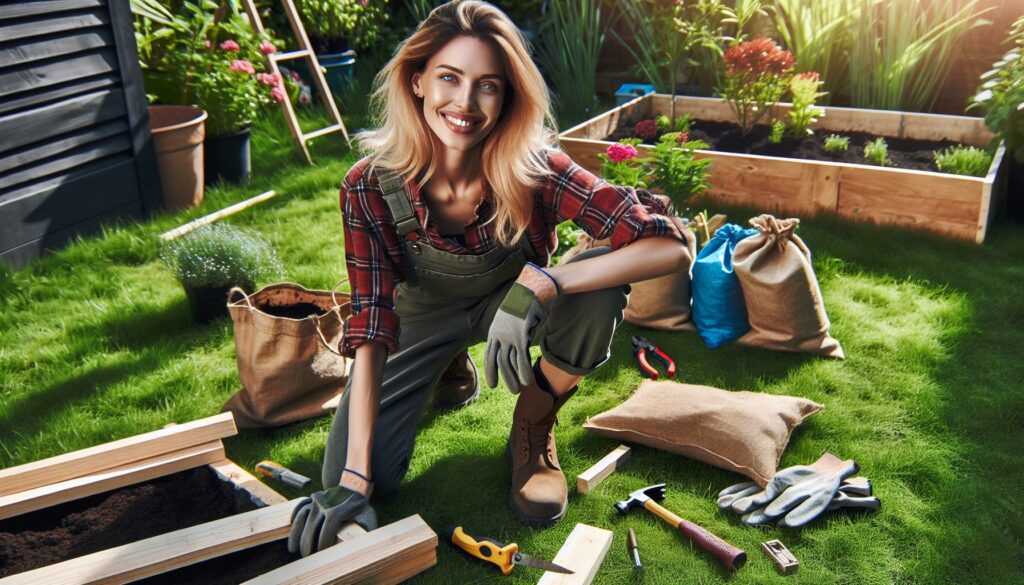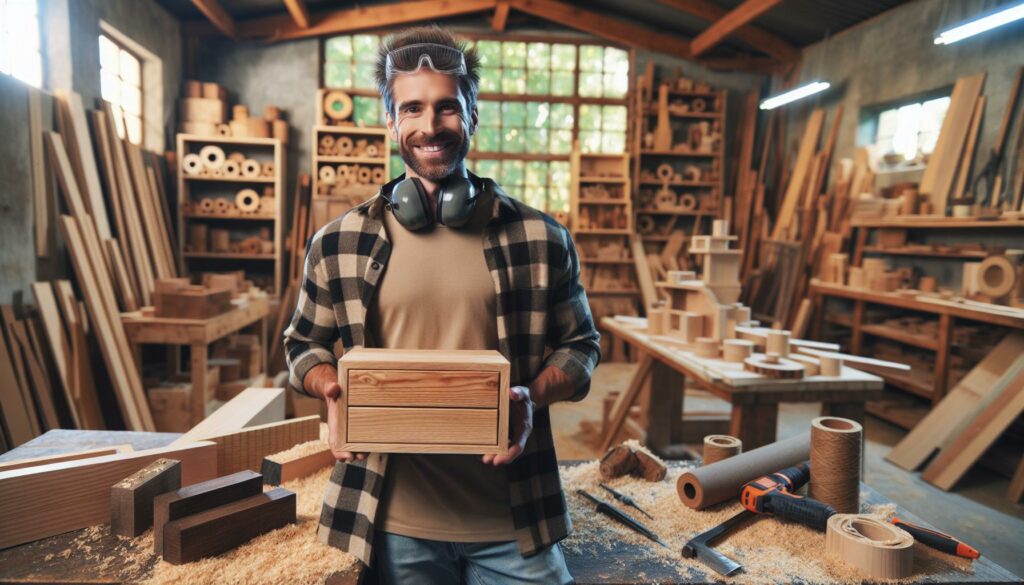There’s something incredibly rewarding about transforming your outdoor space with a little creativity and elbow grease. As a beginner, diving into DIY projects can feel overwhelming, but it doesn’t have to be. With the right ideas and a bit of guidance, you can easily enhance your backyard or garden while gaining valuable skills along the way.
Key Takeaways
- Beginner-Friendly Projects: Outdoor DIY projects are ideal for beginners, offering achievable and rewarding ways to enhance your garden or yard with minimal investment.
- Essential Tools: Basic tools, including tape measures, hammers, and safety gear, are crucial for executing successful outdoor projects safely and effectively.
- Inspiration Ideas: Simple projects like building raised garden beds, creating birdhouses, and designing fire pits can significantly beautify outdoor spaces while being manageable for novices.
- Careful Planning: Effective project execution requires clear goals, thorough research, and careful measurements to avoid mistakes and ensure successful outcomes.
- Safety First: Always prioritize safety by wearing protective gear, checking tools, and maintaining a clear workspace to prevent accidents during DIY tasks.
Outdoor DIY Projects for Beginners
Outdoor DIY projects for beginners offer accessible opportunities for beginners to enhance their yards and gardens. These projects require minimal investment in materials and tools while providing immediate visual rewards. Engaging in such tasks fosters creativity and develops practical skills that prove beneficial over time.
I’ll highlight several easy-to-manage projects to inspire beginners:
- Garden Beds: Constructing raised garden beds allows for organized planting. By using untreated wood or bricks, I can create defined spaces for vegetables or flowers.
- Planters: Crafting simple planters brings greenery to outdoor areas. Using items like wooden crates or repurposed containers adds a personal touch to my space.
- Birdhouses: Building birdhouses supports local wildlife. I’m able to use basic woodcutting skills to create a shelter for birds, enhancing the biodiversity of my yard.
- Fire Pits: Designing a DIY fire pit can become a central gathering spot. Using stones or bricks, I can build a durable structure for warmth and socializing.
- Outdoor Furniture: Constructing simple benches or tables from recycled materials enriches my outdoor experience. I can choose from various designs to fit my aesthetic.
These projects require straightforward instructions, making them suitable for newcomers to DIY endeavors. Simple tools and readily available materials help me start confidently. Engaging in these outdoor DIY projects not only beautifies my surroundings but also boosts my sense of accomplishment.
Essential Tools and Materials

Having the right tools and materials is crucial for any outdoor DIY projects for beginners. These essentials help streamline the process and ensure effective execution.
Basic Tools You Need
- Tape Measure: Accurate measurements are vital for any project to ensure proper fit.
- Level: Keeps surfaces and structures straight, preventing costly mistakes.
- Hammer: Essential for driving nails and assembling wooden structures.
- Screwdriver Set: Includes both flathead and Phillips, allowing for versatile fastener handling.
- Saw: A handsaw or circular saw handles cutting wood for various projects.
- Drill: A power drill simplifies making holes and driving screws quickly.
- Garden Shears: Perfect for trimming plants and maintaining garden aesthetics.
- Safety Gear: Goggles and gloves protect against injuries while working outdoors.
- Wood: Treated lumber is ideal for building structures like raised beds and furniture.
- Nails and Screws: Ensure you have a variety to suit different materials and projects.
- Concrete Blocks: Useful for creating borders or bases for outdoor features.
- Landscape Fabric: Helps control weeds when implementing garden beds or planters.
- Paint or Stain: Protects and beautifies wooden structures, giving them a polished look.
- Planters: Consider using plastic or ceramic planters for flowers and herbs.
- Gravel or Mulch: These materials enhance drainage and aesthetics in garden beds or paths.
- Fencing Materials: Enhances privacy or creates borders to define garden areas effectively.
Simple Outdoor DIY Projects

I believe beginners can enjoy transforming their outdoor spaces with simple projects. Here are three accessible outdoor DIY projects for beginners ideas that enhance your yard while bringing a sense of accomplishment.
Project 1: Building a Raised Garden Bed
Constructing a raised garden bed enhances gardening efficiency. I recommend using treated lumber for durability. Measure and cut the wood into four equal sections, forming a rectangle. Use screws to join the corners, ensuring stability. Fill the bed with soil and compost for optimal plant growth. This project creates a visually appealing area for growing vegetables or flowers, while minimizing strain on your back.
Project 2: Creating a Birdhouse
Crafting a birdhouse invites local wildlife onto your property. I suggest using untreated wood to maintain a safe environment for birds. Cut six pieces of wood to form the sides, bottom, and roof. Assemble the pieces using nails or screws, and create a small entrance hole. Paint or decorate your birdhouse for added charm. Hang it in a sheltered spot to attract birds, contributing to a lively outdoor atmosphere.
Project 3: Designing a Simple Fire Pit
Designing a simple fire pit adds a cozy gathering spot to your yard. I recommend using concrete blocks or bricks, which are easy to work with. Arrange the blocks in a circle to form the fire pit, leaving a gap for ventilation. Ensure the pit is at least 10 feet away from structures and overhanging branches. Light a fire using a fire starter and enjoy evenings outdoors with family and friends. This project elevates your outdoor experience and creates a warm, inviting ambiance.
Tips for Successful Outdoor DIY Projects for Beginners

Successful outdoor DIY projects require careful planning and preparation. I emphasize these key aspects to enhance project outcomes and ensure a smooth process.
Planning and Preparation
- Define your goals: Know precisely what you wish to achieve with your DIY project. Understanding the desired outcome helps narrow down choices and methods.
- Research ideas: Explore different projects to find inspiration and assess complexity. Online resources and DIY blogs often provide valuable insights.
- Create a list of materials: Include all necessary items based on your project requirements. This list ensures you gather everything beforehand, avoiding disruptions during construction.
- Measure your space: Verify that your designated area accommodates your project. Accurate measurements prevent design flaws and minimize waste.
- Sketch a plan: Draft a simple diagram outlining the project’s layout, dimensions, and key features. This visual reference clarifies your approach and streamlines the execution process.
- Wear protective gear: Always use safety glasses, gloves, and masks to shield yourself from debris and hazardous materials. Proper gear minimizes injury risks.
- Check tools before use: Inspect all equipment for damage or wear. Ensuring tools are functional increases safety and efficiency during work.
- Operate tools properly: Familiarize yourself with each tool’s instructions and best practices. Proper handling reduces accidents and enhances project success.
- Be aware of surroundings: Maintain a clear workspace and be mindful of obstacles, such as uneven ground or nearby structures. Staying alert promotes safety while working.
- Avoid overexertion: Pace yourself and take breaks when needed. Recognizing limits prevents fatigue-related accidents and ensures a more enjoyable DIY experience.
Gaining Valuable Skills
Embarking on outdoor DIY projects is a fantastic way to breathe new life into your space while gaining valuable skills. With the right tools and a bit of creativity you can transform your backyard into a personal oasis. Each project not only enhances your outdoor area but also gives you a sense of achievement that’s hard to match.
I encourage you to start small and gradually take on more ambitious tasks as you build confidence. Remember that every project is an opportunity to learn and grow. So grab your tools and let your creativity flow. You’ll be amazed at what you can accomplish!



